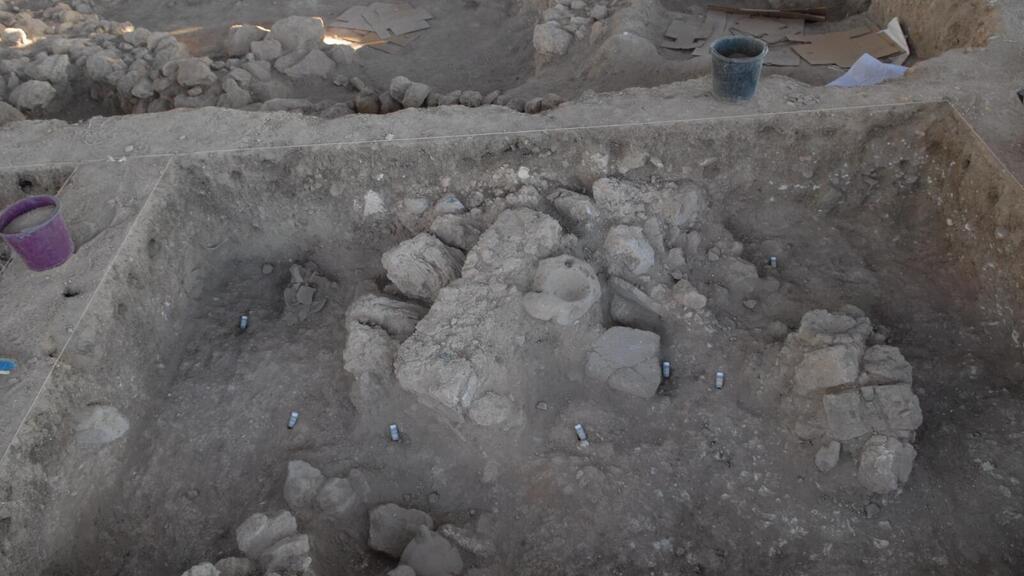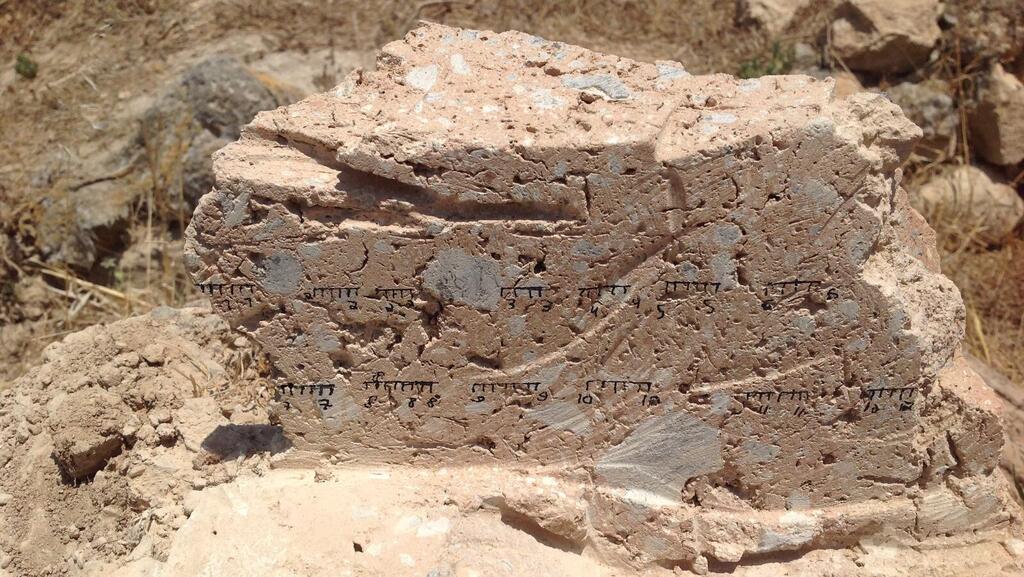A scientific breakthrough will now allow for the identification of burnt materials exposed during archaeological excavations and the reconstruction of the temperature at which they were burned.
Read more:
Researchers from Tel Aviv University, Hebrew University, Bar Ilan University, and Ariel University will apply this method to findings from the ancient Philistine city of Tel Tzafit, providing scientific support for the biblical verse: "Around this time Hazael king of Aram ventured out and attacked Gath, and he captured it. Appeased, Hazael went on his way and didn’t bother Jerusalem." (2 Kings 12:18).
The researchers explained that, unlike previous methods, the new technique enables the identification of specific materials, such as lime plaster, that underwent combustion even at relatively low temperatures, starting from 200 degrees Celsius. This information could have significant implications for interpreting archaeological findings.
A groundbreaking interdisciplinary study, led by Dr. Yoav Vaknin from the Institute of Archaeology at Tel Aviv University and the Paleomagnetism Laboratory at the Hebrew University, involved collaboration with Prof. Ron Shaar from the Institute of Earth Sciences at the Hebrew University, Prof. Erez Ben-Yosef and Prof. Oded Lipschits from the Institute of Archaeology at Tel Aviv University, Prof. Aharon Meir from the Department of Land of Israel Studies and Archaeology at Bar-Ilan University, and Dr. Adi Eliyahu Behar from the Department of Land of Israel Studies and Archaeology, as well as the Department of Chemistry at Ariel University. The findings of this research have been published in the scientific journal PLOS ONE.
Prof. Lipschits explained the research, stating, "Throughout the Bronze and Iron Ages, the main construction material in most regions of Israel was mudbrick. This inexpensive and readily available material was used for constructing walls in most structures, sometimes above stone foundations. Therefore, understanding the technology used to produce mudbricks is of great importance."
The new method is based on measuring the magnetic field established in the mudbrick during the burning process. Dr. Vaknin explained, "Within the material from which the mudbrick is made, there are millions of ferromagnetic minerals – that is, minerals with magnetic properties, acting like tiny 'compass needles' or small magnets. In dried mudbricks, these magnets are arranged in an almost random manner and largely cancel each other out, making the overall magnetic signal of the mudbrick weak and not very uniform. Heating to a temperature of 200 degrees Celsius and above, as in the case of burning, releases the magnetic signals of the particles and gives them freedom of movement."
"Statistically, they then align themselves according to the Earth's magnetic field at that specific location and time. This creates a relatively strong and directionally uniform magnetic field around the mudbrick, measurable using magnetometry – indicating that the mudbrick indeed underwent combustion."
After measuring the magnetic signal recorded in the mudbrick, the researchers gradually "erase" it in a process known as thermal demagnetization. To do this, they heat the mudbrick in a special oven, in a dedicated paleomagnetic laboratory that neutralizes the Earth's magnetic field. The heating releases the mineral particles in the mudbrick, and they randomly reorient, canceling each other out, gradually weakening and losing their magnetic direction.
The researchers validated the method in the laboratory: they burned mudbricks under controlled conditions of temperature and magnetic field, and after recording the magnetization, they gradually erased it. They found that the magnetization disappeared entirely at the temperature at which the mudbrick was burned – providing evidence that the method is indeed reliable.



